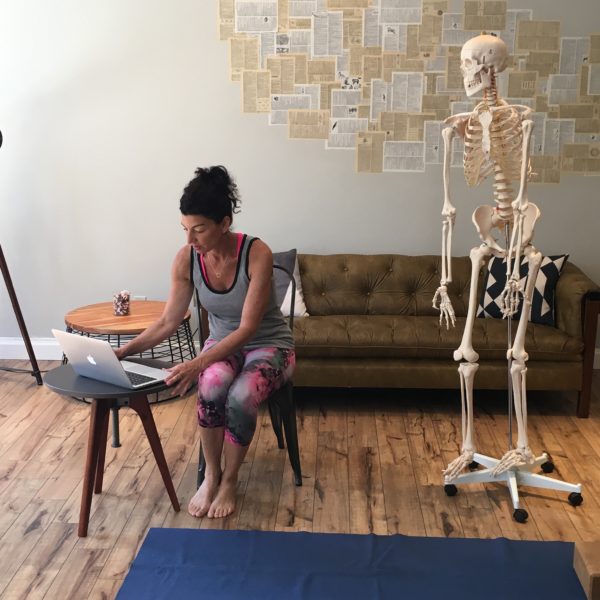
As a yoga teacher who specializes in anatomy, I have lots of content I share on the topic and get lots of emails from teachers with questions. I often get the question: “How can I find the time and the space to learn anatomy once I start teaching?”
Now, this may seem backwards. Anatomy is part of the basic 200 hour training teachers receive to become registered with Yoga Alliance as an RYT. For most studios, they require at least a 200 hour RYT designation in order to teach. So, if that’s the case, why then to teachers spend time learning anatomy after they graduate?
Well, first off, learning any complex topic is not a “once and done” thing. Certainly something as complex as anatomy can take years to not only learn but to integrate into your teaching. Also, another challenge to learning anatomy during your 200 hour training is that there is SO much to learn in those weeks and months, it’s hard to learn it, retain it and then apply it!
For instance, I got this email from a new teacher the other day after she purchased one of my online anatomy courses. Anytime someone buys one of my courses, I always try to find out more about them, if they’re a teacher, what they hope to learn and what their questions are about anatomy. She wrote:
” I recently finished my 200 hours and I am finding that now, when I take courses online, I find that I have the space and time to finish them and am really enjoying them, unlike when I had the panic of trying to learn everything at the same time as happened in my 200 hour training. I am finding that even though my 200 hours covered anatomy, there was so much information that I’d like to re-visit some of it now and learn some of the things I missed.”Â
Bravo! Good for her! This is the mark of a teacher who is always in learning mode. I can say after 15 years of teaching, I am still in learning mode myself and I’m always looking for ways to learn. I completed the NASM Certified Personal Training program last year and passed their certification test. I just purchased an online course on corrective exercise from NASM and will apply the learnings to my teaching. I just signed up for a myofascial release course in August for my “once a year” big week long yoga related training. We must always be in learning in order to expand our knowledge and keep things fresh and current. And also, we must always remember that we’re a student too! Once we think, “Ok, I’m done with learning and I’m a teacher now,” we’re missing a critical part of being a teacher: that of being a student.
So, as a yoga teacher, regardless of how long you’ve been teaching, be sure you’re doing a few things to keep learning high on your list of priorities:
- Keep track of your CEU responsibilities with Yoga Alliance and any individual teachers you’re certified with. I’m a Certified Baptiste Teacher (Baron Baptiste) and a Yoga Medicine Teacher (Tiffany Cruikshank) so I have to maintain my coursework with them. This allows me to stay current with those certifications and learn at the same time. As most teachers have a Yoga Alliance registration, that requires a certain number of hours of training per year. Keep a list of what you’ve done and as the year progresses, look for new opportunities to take workshops and trainings.
- Look for online courses you can take in addition to in-person trainings. I built online courses in large part because I wanted to share anatomy information but also because I recognized that we can’t always afford to GO to a training. Online training is a great way to earn non contact hour CEUs and up your knowledge of a particular aspect of teaching.
- Keep your social media feed filled with connections to teachers you like that serve up good solid yoga content. I’m always saving articles to read later and once a week I take time to read through them, watch videos and use that time to expand my knowledge.
- Make time to practice on your own and play with different sequence ideas. Your own practice time is partly time for you as a student but also time you can try out new sequences and see how they feel.
- The idea of “finding mental space” to learn anatomy is key and many teachers do find that after their 200 hour training, they are ready to really dive into the subject. Enjoy the time in the years after you graduate to learn what you missed and expand on what you know.
For a quick and easy way to learn some anatomy, take my Learn Yoga Challenge. This free video series will walk you through many of the key poses and the anatomy involved. You can download the guide PDF here.Â
If you’re interested in online courses on anatomy, check out my online course library here.Â
What’s the biggest question you have about anatomy these days?
Thanks for reading!
